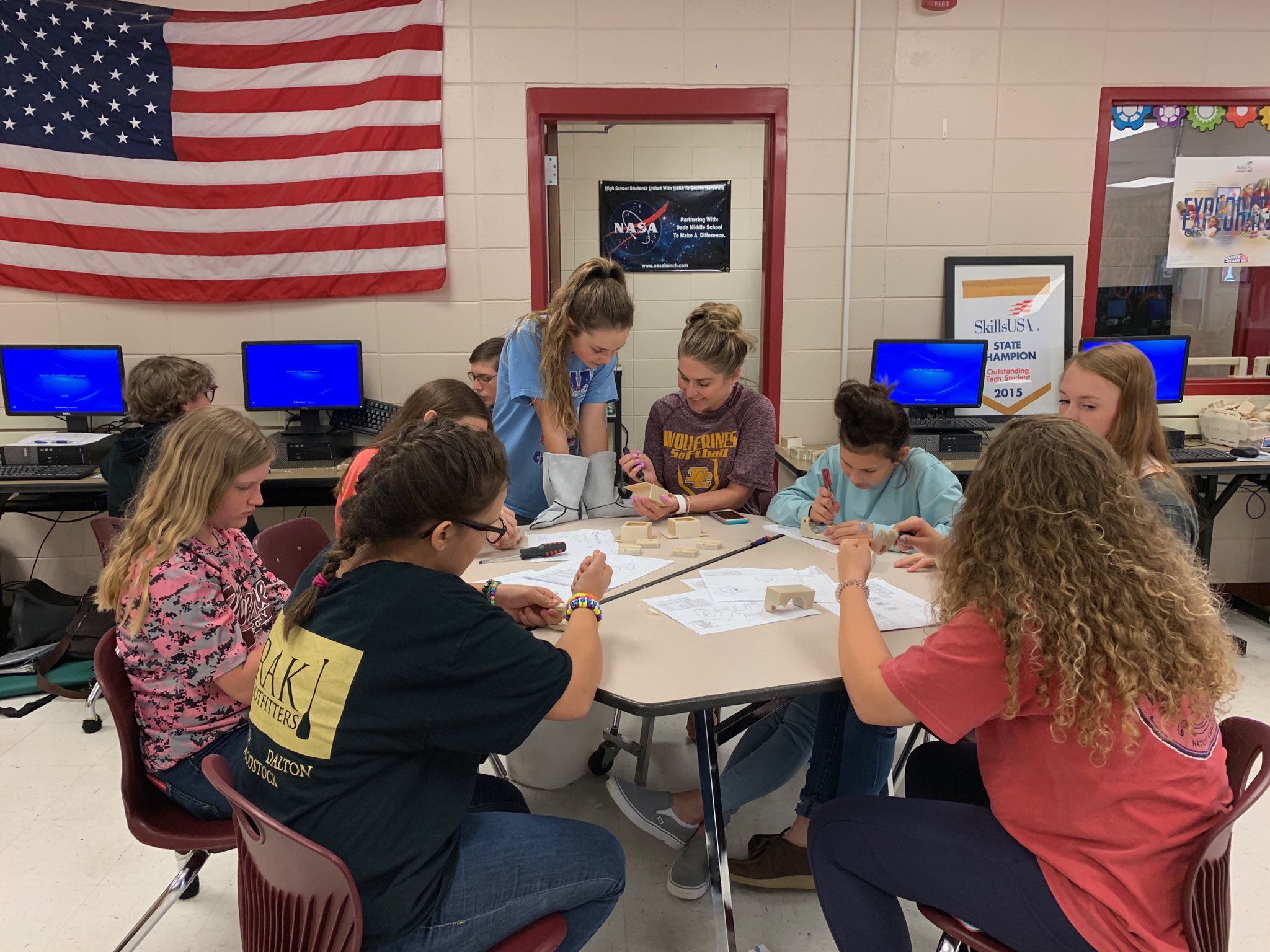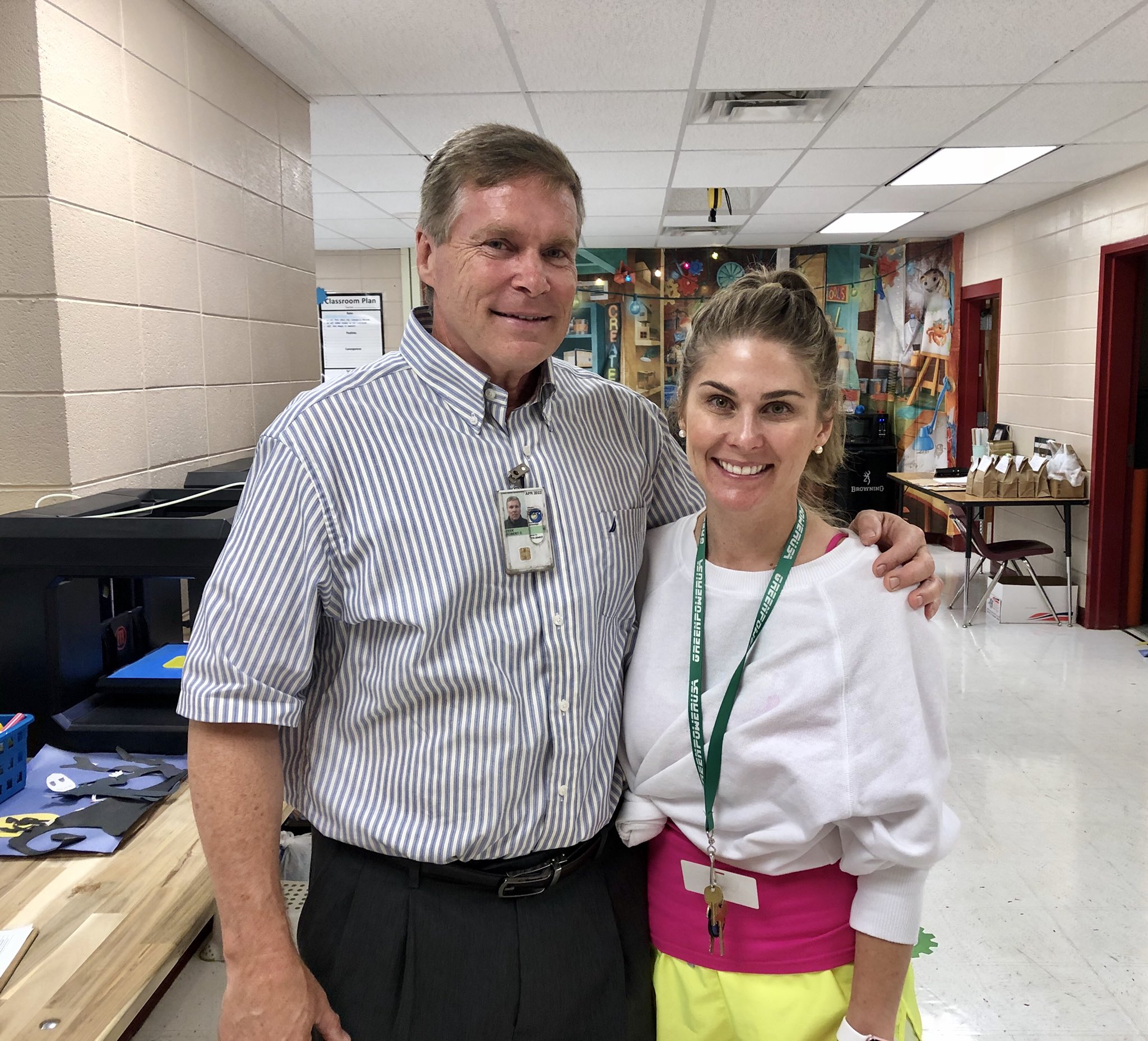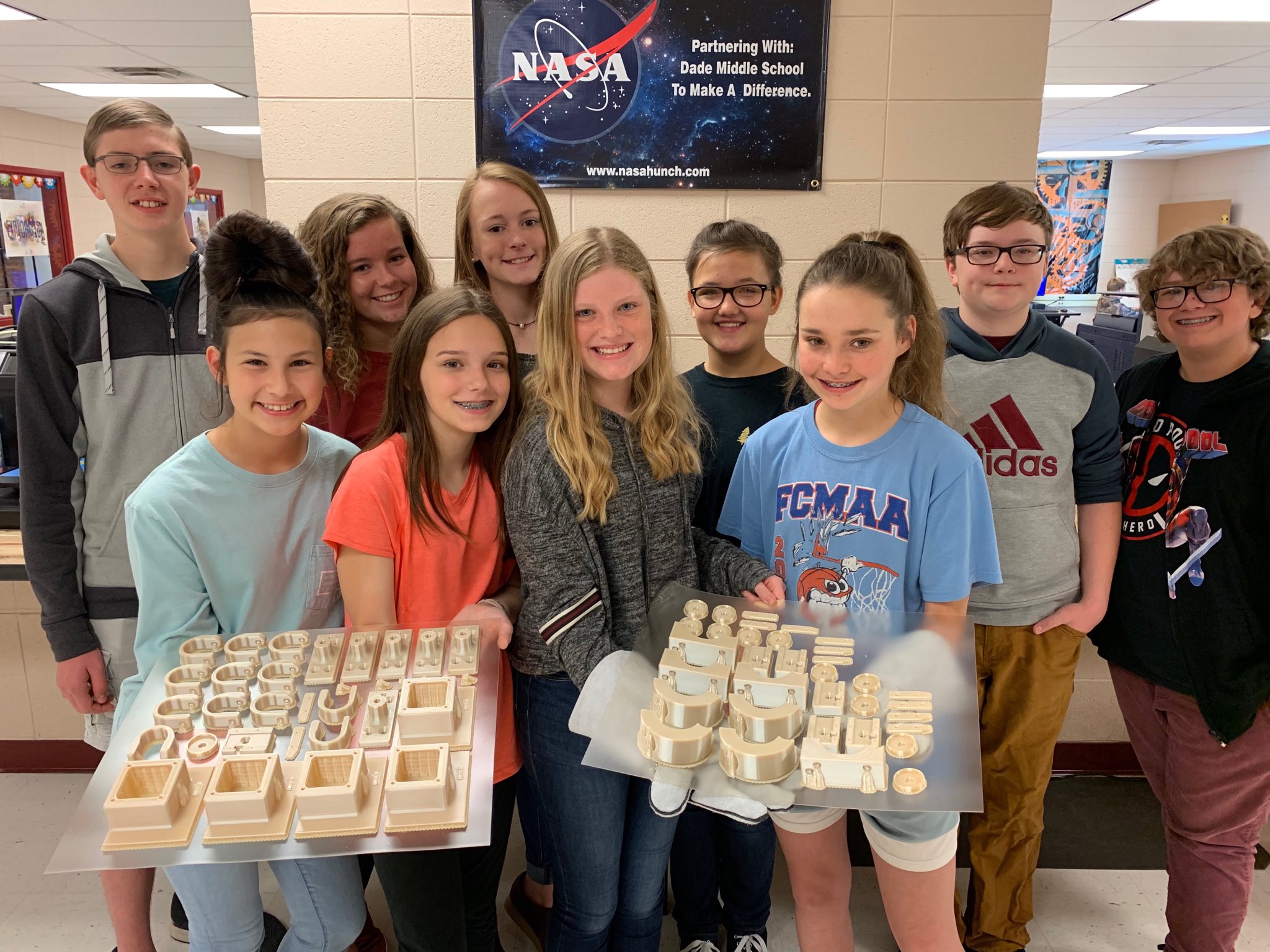At Dade County Middle School in Trenton, Georgia, two students have 3D printed parts for the International Space Station (ISS) as part of the HUNCH (High school students United with NASA to Create Hardware) program. The goal of HUNCH is to show students the many ways they can put their talents to work for NASA, beyond the role of an astronaut. It provides a hands-on experience with the space agency, developing NASA-designed parts and innovative solutions for agency personnel use while exploring advanced technologies, like 3D printing.
Meleah Smith and KK Castleberry 3D printed flight-ready plastic parts for the space station using a Stratasys Fortus 450mc and certified ULTEM 9085 material. According to Dade Middle School’s Director of Career and Technology Innovation, Shenea Hill, the students were fully prepared for the task, first running most of the part prototypes out of ABS plastic before printing the final components.
“I believe additive manufacturing is the future of our economic growth. Not only is it cost-effective, but it allows the designer to go beyond the boundaries of design – Endless Options! However, we do not have enough trained industry workers available to fill this void, and it is only growing,” Hill said to 3DPrint.com. “Being able to start teaching students at a middle school level is only going to prepare them for what is to come. They will have the skills needed for this advanced technology and will become innovators for our future.”
 Shenea Hill and Dade County Middle School students working on 3D printed parts for NASA and the Space Station as part of the NASA HUNCH program. Image courtesy of Shenea Hill/Dade County Middle School.
Shenea Hill and Dade County Middle School students working on 3D printed parts for NASA and the Space Station as part of the NASA HUNCH program. Image courtesy of Shenea Hill/Dade County Middle School.
The award-winning educator initiated Dade County’s partnership with NASA and NASA’s HUNCH program in 2018. Hill developed the first middle school level HUNCH that provides additive manufacturing technology using an industry level 3D printer, the Stratasys Fortus 450mc. Moreover, Dade County is the only school system in the program to have two valuable printing platforms.
As part of an expanded partnership opportunity with HUNCH, the school also acquired a high-end 3D carbon fiber-infused printer, the Stratasys Fortus 380mc. With the machine, students can increase their advanced manufacturing capabilities by producing super-strength carbon fiber elements for NASA, the ISS, and future deep space missions, as well as flight parts that may even include U.S. Army helicopter products. The students have already 3D printed multiple components, including a camera shoe, tape dispenser, fan cover, ball clamp, handlebar, latching system, and so much more.

In Georgia, the Dade County School system partnered with NASA HUNCH in October 2018 thanks to an initiative from Dade Middle School’s Director of Career and Technology Innovation Shenea Hill. Hill during the first meeting with HUNCH Co-founder Bob Zeek. Image courtesy of Shenea Hill/Dade County Middle School.
“This is a one-of-a-kind experience for the students in Dade County to kick-start their careers and interact with a piece of NASA,” pointed out Bob Zeek, HUNCH Co-founder and Program Manager at NASA’s Marshall Space Flight Center in Huntsville, Alabama. “Empowering and inspiring the next generation of students is the key mission for the NASA HUNCH program and will certainly ring true in Trenton this year. You never know, one of those students just might be the next NASA astronaut, engineer, or scientist.”
Dade County School is one of 277 schools in the U.S. that are part of the HUNCH program. The nationwide instructional partnership between NASA, high school and middle school students began in 2003 with two schools in Alabama and one in Houston. The goal was to build cost-effective hardware and soft goods both for use on the space station and for NASA astronauts and flight controllers in training.
Since its foundation, the program has produced more than 1,500 training and flight items for the space station program, that’s roughly 30,000 individual parts with 824 assembled components flown to the station. Students across the nation have helped build extravehicular wires for future spacewalks at the ISS, parts for cargo suitcases, and even 3D printed a seat track connection for a stationary bike that astronauts use in orbit, educational videos, and experiments proposed to fly on the space station.
 Shenea Hill and Dade County Middle School students working on 3D printed parts for NASA and the Space Station as part of the NASA HUNCH program. Image courtesy of Shenea Hill/Dade County Middle School.
Shenea Hill and Dade County Middle School students working on 3D printed parts for NASA and the Space Station as part of the NASA HUNCH program. Image courtesy of Shenea Hill/Dade County Middle School.
Schools can participate in HUNCH by meeting minimum qualifications and having the capability to complete program requirements. However, to be a successful program, HUNCH organizers recommend that school faculties include teachers with prior experience in six focus areas: design and prototyping, software, hardware, sewn flight articles, media, and culinary arts.
Once a school has qualified to work a HUNCH task, a Space Act Agreement is developed. NASA provides academic institutions expertise and guidance to further engage students with the products’ design and fabrication. There are currently 76 HUNCH Space Act Agreements across the U.S., and Marshall holds 39 of those, nine of which are new partnerships formed within the last year. According to HUNCH Space Act Agreements Manager at NASA’s Marshall, Whitney Young, the astronauts put in requests for things that they need on the space station, and essentially this turns into “a wish list” that gets cast out to school systems.

Dade County Middle School students present the 3D printed parts for NASA and the Space Station as part of the NASA HUNCH program. Image courtesy of Shenea Hill/Dade County Middle School.
“The biggest thing in my job is seeing the light bulbs go off when students make the connection of taking a project or a task and knowing where it’s going to fly on the space station when it’s going to fly, and the self-gratification,” suggested Zeek. “With new partnership horizons and advanced manufacturing technologies, Dade County High School students will have opportunities that exceed many high school-level curriculums and capabilities that are in our program,”
After completing a project, Zeek said students feel satisfaction and pride knowing their work is being used on the space station. HUNCH has already reached over 2,500 students who are learning to work as part of a team and developed an interest in STEM-related fields. Teaching middle and high school students how to leverage technology and engineering to enhance innovation and creativity lays down the foundations for future STEM-related careers in college and at work. Furthermore, this new educational paradigm offers the next generation a one-of-a-kind opportunity for a dynamic, interactive learning experience they will never forget.
Subscribe to Our Email Newsletter
Stay up-to-date on all the latest news from the 3D printing industry and receive information and offers from third party vendors.
Print Services
Upload your 3D Models and get them printed quickly and efficiently.
You May Also Like
Reinventing Reindustrialization: Why NAVWAR Project Manager Spencer Koroly Invented a Made-in-America 3D Printer
It has become virtually impossible to regularly follow additive manufacturing (AM) industry news and not stumble across the term “defense industrial base” (DIB), a concept encompassing all the many diverse...
Inside The Barnes Global Advisors’ Vision for a Stronger AM Ecosystem
As additive manufacturing (AM) continues to revolutionize the industrial landscape, Pittsburgh-based consultancy The Barnes Global Advisors (TBGA) is helping shape what that future looks like. As the largest independent AM...
Ruggedized: How USMC Innovation Officer Matt Pine Navigates 3D Printing in the Military
Disclaimer: Matt Pine’s views are not the views of the Department of Defense nor the U.S. Marine Corps Throughout this decade thus far, the military’s adoption of additive manufacturing (AM)...
U.S. Congress Calls Out 3D Printing in Proposal for Commercial Reserve Manufacturing Network
Last week, the U.S. House of Representatives’ Appropriations Committee moved the FY 2026 defense bill forward to the House floor. Included in the legislation is a $131 million proposal for...

































